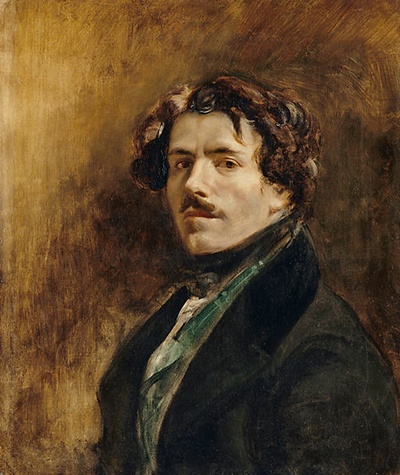Eugene Delacroix was both opinionated and also very thoughtful around the themes involved in art. He left behind a surprisingly large array of quotes from his lifetime on all sorts of topics.
Famous Quotes by Eugene Delacroix
All painting worth its name, unless one is talking about black and white, must include the idea of color as one of its necessary supports, in the same way that it includes chiaroscuro, proportion, and perspective.
A picture is nothing but a bridge between the soul of the artist and that of the spectator.
Cold exactitude is not art; ingenious artifice, when it pleases or when it expressses, is art itself.
Criticism is like many other things, it drags along after what has already been said and doesn't get out of its rut.
Draughtsmen may be made, but colourists are born.
Everyone knows that yellow, orange, and red suggest ideas of joy and plenty.
Finishing a painting demands a heart of steel: everything requires a decision, and I find difficulties where I least expect them... It is at such moments that one fully realizes one's own weaknesses.
Glory to that Homer of painting, to that father of warmth and enthusiasm... he really paints men.
Discussing Peter Paul Rubens
I am truly sorry for the artists gifted with imagination who can never have any idea of this virgin sublime nature... I can only look forward with sadness to the moment when I shall leave forever the land of beautiful or ange trees covered with flowers and fruit, of the beautiful sun, of the beautiful eyes and of a thousand other beauties.
Written during his voyage to North Africa in 1832
If painters left nothing of themselves after their deaths, so that we were obliged to rank them as we do actors according to the judgment of their contemporaries, how different their reputations would be from what posterity has made them!
I have told myself a hundred times that painting – that is, the material thing called a painting – is no more than a pretext, the bridge between the mind of the painter and the mind of the spectator.
It is often we come the closest to the essence of an artist... in his or her pocket notebooks and travel sketchbooks... where written comments and personal notes provide an intimate insight into the magical mind of a working artist.
Of which beauty will you speak? There are many: there are a thousand: there is one for every look, for every spirit, adapted to each taste, to each particular constitution.
Perhaps the sketch of a work is so pleasing because everyone can finish it as he chooses.
Remember the enemy of all painting is gray: a painting will almost always appear grayer than it is, on account of its oblique position under the light.
Seeing artistically does not happen automatically. We must constantly develop our powers of observation.
The first virtue of a painting is that it be a feast for the eyes.
The living model never answers well the idea or impressions the painter wishes to express; one must, therefore, learn to do without one, and for that, you must acquire facility, furnish one's memory to the point of infinitude, and make numerous drawings after the old masters.
The more an object is polished or brilliant, the less you see its own color and the more it becomes a mirror reflecting the color of its surroundings.
The so-called conscientiousness of the majority of painters is only perfection applied to the art of boring.
What makes sovereign ugliness are our conventions.
Quotes about Eugene Delacroix by Art Academics and Fellow Artists
Many of Delacroix's Salon paintings depicted dramatic scenes drawn from contemporary history as well as literature. Some of the subjects were shocking for their violence and unabashed portrayal of human suffering, such as Death of Sardanapalus and Massacre at Chios. These works signaled a new direction in modern art, one that emphasized emotional content above order and rationality. The visual impact of Delacroix's art owes a great deal to his study of color; he understood (and employed) such principles as the division of tones and the harmony of contrasts, both of which would be enormously important for later modernists such as Van Gogh and Seurat.
TheArtStory.org
In contrast to the Neoclassical perfectionism of his chief rival Ingres, Delacroix took for his inspiration the art of Rubens and painters of the Venetian Renaissance, with an attendant emphasis on colour and movement rather than clarity of outline and carefully modelled form. Dramatic and romantic content characterized the central themes of his maturity, and led him not to the classical models of Greek and Roman art, but to travel in North Africa, in search of the exotic.[3] Friend and spiritual heir to Théodore Géricault, Delacroix was also inspired by Lord Byron, with whom he shared a strong identification with the "forces of the sublime", of nature in often violent action.
Kenneth Clark, Civilisation




